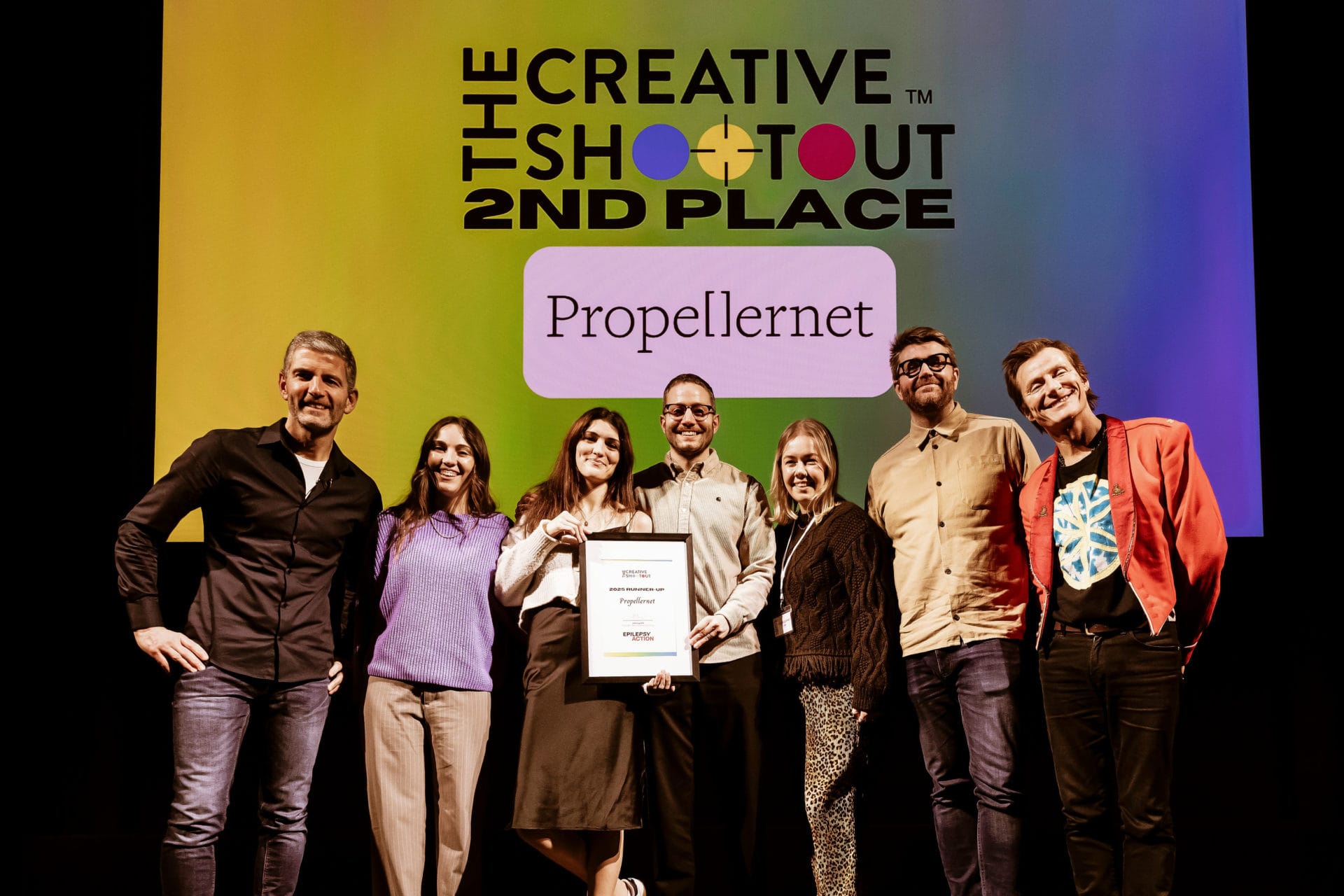
In episode 2 we had the pleasure of discussing the topic of reactive PR and newsjacking with the experienced digital PR specialist, Sophie Rhone. Sophie shared valuable insights into the world of reactive PR, emphasising the importance of putting clients at the centre of conversations and reaching a larger audience through timely and relevant content. We delved into the benefits of reactive PR, such as engaging with trending topics and breaking news to capture audience attention. Sophie highlighted the need for more creative thinking in the digital PR industry, encouraging a return to big standout creative campaigns. Have a listen or you can read the summary of AI transcript below.
Go back to all episodes0:00:07 – Stephen Baker
Hello and welcome to the Digital PR Podcast, where we delve into the major talking points in the digital PR industry. I’m Steve Baker, and with me is Louise Parker. Hi, Lou. We both work at the digital marketing agency Propellernet, and between us, we have nearly two decades of experience in digital PR—almost a decade for you, right Lou?
0:00:22 – Louise Parker
Yep, that’s right.
0:00:23 – Stephen Baker
And over a decade for me. In recent years, we’ve seen the digital PR industry boom, bringing with it a wealth of fascinating conversations about the discipline, from creativity and relevance to burnout. This podcast will explore the hot topics everyone is talking about, with insights from some very special guests.
0:00:47 – Louise Parker
Today, we’re discussing reactive PR and newsjacking, strategies that have been a staple of traditional PR agencies for decades. Recently, the digital PR industry has also embraced these quick-turnaround stories that react to breaking news or events. To help us explore how digital PRs can use reactive techniques to build links and secure great coverage, we have Sophie Roan with us, who specializes in Reactive PR. Welcome, Sophie!
0:01:16 – Sophie Rhone
Hello, thank you for having me.
0:01:18 – Louise Parker
No problem, thanks for being here.
0:01:19 – Stephen Baker
Thanks for joining us, Sophie. Let’s dive right in. What is newsjacking and reactive PR? How would you describe it and explain it?
0:01:27 – Sophie Rhone
I’d describe it as positioning your clients as experts and translating industry jargon into plain terms. For instance, financial clients often simplify breaking news for a broader audience. On the other hand, you might push products based on trending stories, like Harry Styles wearing a specific pair of trainers. You can leverage that trend to generate headlines like “Harry Styles Behind Surge in Trainer Sales.” TikTok is another platform where trends can take off quickly. For example, we identified a viral story about a fake tan bed sheet on TikTok and promoted our client’s version, which sold out rapidly at £20 each.
0:02:46 – Louise Parker
It’s fascinating how sometimes the simplest link to your brand can be incredibly effective. As I mentioned in the intro, reactive PR and newsjacking are becoming more popular in the digital PR and SEO PR space. Do you see more agencies and brands adopting these strategies? If so, why?
0:03:23 – Sophie Rhone
Definitely, more agencies are embracing reactive PR because of its quick turnaround. Unlike big hero campaigns that can take eight weeks to develop and may not immediately get links, reactive PR allows for testing and quick adjustments. If a reactive story doesn’t work, it’s not a significant loss. Hero campaigns still have their place with their long-term outreach, but adding reactive PR to the mix helps deliver more immediate results to clients.
0:04:30 – Stephen Baker
You mentioned A/B testing. How do you approach that with reactive PR? Are you testing different versions of the story or headlines?
0:04:45 – Sophie Rhone
With reactive PR, sometimes you just have to take a chance. A hundred other brands might have the same idea, and it might not be as interesting as you think. A/B testing involves trying different headlines or pitches. If a press release doesn’t get picked up, you can quickly adjust and try again. Unlike hero campaigns that take longer and cost more, reactive PR is more flexible and less risky.
0:05:32 – Louise Parker
Do you often use extra budget for reactive PR, or is it mostly time and quick research?
0:05:37 – Sophie Rhone
Mostly, it’s just time and research. You might use Google search data, Google Trends, or even conduct an overnight poll to get opinions on a topic. It’s all about speed and minimal cost, which is appealing to clients.
0:06:13 – Stephen Baker
That makes sense. Given its speed and minimal budget requirements, it’s easy to see why reactive PR is so attractive to clients. While hero campaigns still have their place, reactive PR intrigues us too. What do you think a client needs to do to make reactive PR effective?
0:06:42 – Sophie Rhone
It’s all about process and building a relationship with the client. You need a dedicated sign-off person and a clear timeframe. If they don’t stick to the timeframe, you might miss the reactive opportunity. Communication and trust are key to making it work effectively.
0:07:29 – Louise Parker
How long do you typically give clients to approve a reactive idea?
0:07:39 – Sophie Rhone
For finance announcements, it might be a couple of hours. For pop culture or seasonal topics, you might have a couple of days, but ideally within 24 hours. Planning ahead for predictable events, like Halloween, helps ensure timely sign-offs.
0:08:23 – Stephen Baker
How do you come up with reactive ideas? Are you always tuned into what’s happening, or do you use specific tools?
0:08:58 – Sophie Rhone
I rely on two approaches: seasonality and news monitoring. For seasonality, you can plan ahead for events like Christmas or Halloween. For news monitoring, I use RSS feeds tailored to specific industries and keywords. Tools like RSS OWL help filter news so I don’t have to consume everything manually.
0:10:00 – Louise Parker
That’s interesting. I’ve never thought of using RSS feeds like that.
0:10:02 – Sophie Rhone
It’s a game-changer. Instead of doom-scrolling, the news comes to you. It reduces stress and makes it easier to stay on top of relevant stories without being overwhelmed.
0:10:51 – Stephen Baker
That’s a great tip. Are there specific sectors where reactive PR works particularly well, or ones that are more challenging?
0:12:05 – Sophie Rhone
Travel can be tricky because airlines, for example, can’t always comment on their own issues. It really depends on the day and the specific news. Some industries are more naturally suited to reactive PR than others.
0:13:03 – Louise Parker
Do you see brands sometimes jumping on reactive opportunities where they maybe shouldn’t? Are there common mistakes you notice?
0:13:22 – Sophie Rhone
Occasionally, brands might misjudge and comment on irrelevant topics, but generally, brands that make these mistakes don’t get covered. It’s important to consider whether a brand’s comment is genuinely relevant and beneficial.
0:14:33 – Stephen Baker
I agree. There’s a fine line between seizing an opportunity and overstepping. Do you think there’s a danger of brands overusing reactive PR and trying to comment on everything?
0:15:17 – Sophie Rhone
Absolutely. Brands need to know if they can be funny or relevant. Brands like Audi and Ryanair do it well, but there’s a risk of overdoing it. It’s crucial to have a strategy and weigh the pros and cons of each opportunity.
0:15:45 – Louise Parker
How do you handle the pressure of reactive PR without burning out?
0:16:13 – Sophie Rhone
It’s essential to prioritize your well-being. Sometimes, you need to let a story go if it’s causing too much stress. During COVID, the pressure was intense, and it’s important to recognize when you need to step back. No link is worth compromising your mental health.
0:17:14 – Louise Parker
That’s a valuable perspective. It’s easy to get caught up in the negative news cycle, but it’s crucial to consider the impact of the stories we put out there.
0:17:53 – Sophie Rhone
Absolutely. Early in COVID, I realized that some stories might contribute to scaremongering, which isn’t fair to the audience. We need to balance opportunities with the potential negative impact on people.
0:18:35 – Stephen Baker
How do you think COVID has influenced the popularity of reactive PR in digital PR?
0:19:14 – Sophie Rhone
COVID definitely accelerated reactive PR. Campaigns were no longer relevant, and we needed to deliver results quickly. We pivoted to commenting on current events, which was more immediate. Journalists wanted helpful guides and comments, so we adapted our strategy to meet those needs.
0:20:19 – Stephen Baker
It was the ultimate test of flexibility. Reactive PR has become integral to most approaches now, not just a nice-to-have.
0:20:49 – Louise Parker
Do you think there’s an argument for doing only reactive PR without campaigns?
0:21:07 – Sophie Rhone
Campaigns still have their place, especially for long-term ownership and detailed data. Some campaign types may be less popular now, but standout campaigns will always be valuable.
0:21:52 – Louise Parker
From an SEO perspective, do the links from reactive PR differ from those from campaigns? Are there more no-follows or affiliates?
0:22:22 – Sophie Rhone
Product-related reactive PR often results in affiliate links. It’s a balance.
0:25:43 – Sophie Rhone
He must be one of the most loved people on this planet.
0:25:49 – Stephen Baker
Yes, his campaign is quite impressive. Let’s not give too much away. We can always edit this part out, but I’ll note down who is the most loved and loathed person on Earth.
We’ve talked extensively about the best approaches and strategies, and you’ve shared some great insights and tips. What do you think are the most common mistakes made by brands, clients, freelancers, or in-house teams when it comes to reactive PR and newsjacking? Is it mainly about the lack of speed, or responding to the wrong things? What have you seen that you dislike?
0:26:26 – Sophie Rhone
I think it’s when it turns into blatant advertising. You’re trying to be reactive, but instead, you’re just trying to sell your product without any real link to the story. Sometimes, brands can be tone-deaf, commenting on sensitive issues without taking a moment to consider the potential impact. It’s crucial to think, “Is this worth it? Will I upset people, or will I be helpful?”
0:26:58 – Louise Parker
What do you think is the biggest mistake, and do you have examples of great reactive PR that you’ve either done yourself or seen and thought, “I wish I’d done that”?
0:27:14 – Sophie Rhone
One example that stands out is the Squid Games campaign by Rise at Seven with the white vans. It went viral, and I thought it was brilliant. At Propeller Net, we do a lot of reactive PR, and there are times when I see campaigns and think, “Why didn’t I think of that?” Many brands are doing reactive PR, often without even realizing it. For example, Ocado’s dog Christmas pudding campaign was excellent. Their PR team might not have realized its potential, but it became a hit on social media. People have great products that can be leveraged if they recognize their PR potential.
0:28:21 – Louise Parker
So, they had this product, sold it well, and it turned out to be an excellent PR opportunity.
0:28:31 – Sophie Rhone
Exactly, and then people start tweeting about it and tagging everyone.
0:28:37 – Stephen Baker
Sometimes, people don’t realize they have a golden product that can generate headlines and links. How do you think this is missed? Is it the PR team’s job to sift through products and connect with the brand or social team, whether in-house or with a client? Or is it a bit of both?
0:29:23 – Sophie Rhone
When working with a client on reactive PR, I review everything they offer. Often, in-house PR teams might overlook certain products because they’re too familiar with them. They see these products every day and don’t recognize their potential for generating interest.
0:29:51 – Stephen Baker
It becomes second nature, so they lose sight of what’s interesting.
0:29:58 – Sophie Rhone
Yes, it’s right in front of them, but they miss it.
0:30:06 – Stephen Baker
That’s a great tip. Starting with a thorough brand immersion and reviewing what the client offers can reveal interesting opportunities, like dog Christmas puddings. Even existing content on their blogs can be repurposed.
0:30:40 – Sophie Rhone
Exactly, especially in times of financial constraint. Brands often have content on reducing food waste at Christmas, for instance. Adding some search volume or relevant data can make it newsworthy. It’s about crafting the right headlines.
0:31:15 – Louise Parker
That’s a great strategy, especially with a tricky in-house PR team. Using existing content from their website makes it harder for them to argue against it. The next challenge is getting permission to contact journalists, but at least the initial step is done.
0:31:56 – Sophie Rhone
You’ll find clients eager to be reactive, but sometimes their in-house PR might resist. Offering to help by using existing content and respecting their contacts can bridge that gap. We can focus on niche sites and avoid nationals that don’t provide follow links.
0:33:05 – Stephen Baker
That’s a smart approach. Now, looking to the future, where do you think reactive PR and newsjacking are heading? How might it change?
0:33:57 – Sophie Rhone
I think we’ll see more planned reactive PR based on seasonality. Brands will become more aware of simple tactics. They’ll look at their offerings and think, “This costs nothing. Why not ask a journalist if they want this comment?” Reactive PR will be integrated into broader PR strategies, possibly as part of larger retainers. Campaigns won’t die out, but the industry will evolve beyond repetitive tactics.
0:35:02 – Stephen Baker
Do you think we’ll see agencies specializing purely in reactive PR and newsjacking?
0:35:29 – Sophie Rhone
Yes, definitely. Some agencies might excel at reactive PR even if their larger campaigns struggle. For established brands with complex approval processes
0:36:03 – Louise Parker
When reactive PR is done well, what are the biggest benefits? How would you sell it to someone?
0:36:15 – Sophie Rhone
The main benefit is putting your client at the center of a big conversation. Reactive PR allows you to reach people consuming the news right now, unlike niche hero campaigns that take time to build an audience. If you comment on something viral, like a TikTok trend, you can reach a new audience that a hero campaign might not target. It’s an effective way to engage a larger audience.
0:37:07 – Stephen Baker
For our final question, what do you want to see more of in the digital PR industry, and what do you want to see less of?
0:37:24 – Sophie Rhone
I want to see more creative thinking. Over the past 10 years, the PR industry has been through various trends, from infographics to big data sets. Now, we see a lot of surveys, partly due to workload pressures. PR managers are often so stretched they can’t be creative and just churn out content. I want to see standout creative ideas, like the children’s books on internet safety by Neoman. Cross-channel efforts, especially on social media, offer great opportunities for creativity.
0:39:01 – Stephen Baker
Thank you very much, Sophie. It’s been a pleasure to chat about reactive PR and the digital PR world.
0:39:12 – Louise Parker
Yes, thank you for joining us. Would you like to share your Twitter handle for anyone with questions?
0:39:21 – Sophie Rhone
Sure, it’s just Sophie Rhone. Feel free to reach out if you have questions or want to collaborate. Hope to speak to you all soon.
0:39:48 – Louise Parker
Great chatting with you. Thank you so much. Thanks, Sophie.
0:39:52 – Sophie Rhone
Bye, see you later.






